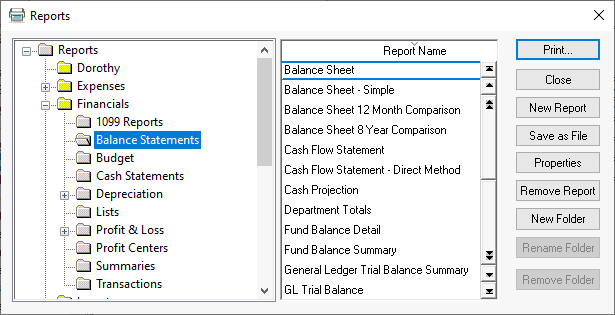Balance Sheet
A balance sheet is a financial statement that reports the company's assets, liabilities, and equity balances for a given month and fiscal year. This financial statement provides a snapshot of what a company owns and owes, as well as the owner's investment. The balance sheet must always balance the assets with liabilities and equity (Assets = Liabilities + Equity + Net Income of the P&L statement).
The financial account grouping and labels are determined by the configuration of the Chart of Accounts. Review Chart of Accounts Folders for more details on configuration of groups or changing labels.
Open the balance sheet reports by selecting File > Reports from the main EBMS menu and then opening Financials > Balance Statements as shown below:

Select Balance Sheet for a typical comparison balance sheet at shown below:


Review the Balance Sheet 12 Month Comparison and Balance Sheet 8 Year Comparison for multiple period comparisons to determine trends.